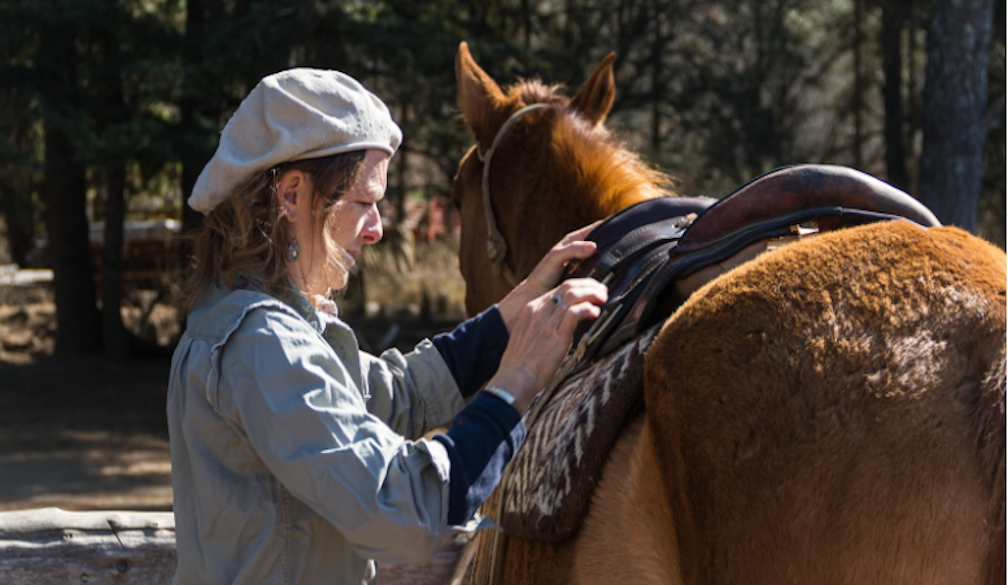Sustainable Horse Gear: Eco-Friendly Tack Taking Over the Equestrian World

(Source)
For anyone who has horses in their life, there is a natural connection to nature. We enjoy seeing the beauty of nature and the fantastic animals in every ride. It's clear why the equestrian world is adopting more sustainable practices. The shift from feed to stable management is not a temporary trend – it's becoming a real commitment.
One of the most noticeable shifts toward sustainability is in the field of equestrian horse equipment. Green tack long ceased to be only an alternative. The movement is growing, allowing riders and their horses to wear gear that's easy on the earth but still looks great and performs well.
Consider the types of materials that traditionally appear in equestrian horse equipment: Leather is sometimes treated with strong chemicals, and the main ingredients in synthetic fabrics come from oil. While plastic has helped our lives, we are starting to see its negative impacts on the environment. New ways to build are appearing, using both high-tech and recycled materials, and the advantages go further than just helping the environment.
In 2025, the conversation has shifted. From amateurs to professionals, horse lovers are embracing different options that are good for the environment. In addition to the right thing, people are figuring out that eco-friendly gear usually offers better construction, less trash in the world, and a stronger community bond.
Tack with a Lighter Hoofprint
Let's start with the basics: saddles, bridles, and reins. Now, we are seeing them made in new ways out of innovative materials like:
1. Cactus Leather & Cork
Yes, you read that right. It is now common for designers to make saddles and bridles from cactus leather. This animal-free material will neither harm the environment nor ripen and decay before use. Because cork is light and doesn't absorb water, it is now used in many ergonomic saddle pads.
2. Repurposed and Recycled Tack
In equestrian circles, upcycling is popular, from reins made from recycled climbing ropes to bridles built from used leather belts. Each piece of artwork offers a different tale and gives materials a second chance at life.
3. Modular Designs
Some manufacturers produce tacks with interchangeable components. If a buckle breaks, riders can now replace specific parts rather than discarding the entire bridle. This is more environmentally friendly, more intelligent, and ultimately less expensive.
Greener Grooming and Stable Gear
Everyone riding knows grooming isn't just a duty — it's a way to bond with their horse. Electric scooters are now getting a more environmentally friendly update.
Bamboo Brushes: Bamboo is a top choice for sustainability because it is soft, strong, and biodegradable. Natural bristles teamed with these brushes give them strong cleaning ability and are also friendly toward the environment.
Refillable Shampoos: In 2025, several equine shampoo brands will offer to refill or subscribe to help reduce plastic waste. Ingredients? Choose organic, cruelty-free products that are friendly to sensitive horse skin.
Compostable Wipes & Sponges: Instead of wipes made with plastic, use biodegradable products for grooming.
Improvements have also been made in stables—solar-powered water pumps, LED lighting, and rubber pads made from recycled materials are becoming common in many places.
Rugs That Respect the Planet
A horse rug is a must-have in many yards, although most contain synthetic fibres that release microplastics and have been around for over a century.
Eco-conscious brands are now giving people a different option with their:
Carpets that use recycled PET bottles — like those from which you drink fizzy drinks.
Sheets for flies are made from organic cotton and are breathable, compostable, and don't contain chemicals.
Let designers make things that can be fixed with kits or warranties so users won't feel the need to replace them.
Their environmental benefits don't stop there — they are generally less dusty, stronger, and feel much better on the horse's legs.
Riding Wear with Purpose
The things a rider wears are changing just as quickly. Ethical equestrian clothing companies are making these changes:
Organic cotton jodhpurs are worn with a base layer made from bamboo.
Eco-certified waterproof jackets made using material from recycled ocean trash.
Remember, there are always accessories to consider. Gloves made from biodegradable fibres, belts made from vegan leather, and even boots created using low-impact production strategies are now available in the mainstream.
The Verdict: A More Responsible Ride
Sustainability in equestrianism isn't a fashion—it's the future—and luckily, it's a lovely one.
Imagine a world where your tack tells a tale of innovation, care, and craftsmanship, where every experience displays your values, and where your ardour for horses aligns with your respect for the surroundings they roam in.
That's what the new wave of equestrian horse equipment is all about.
So, when you saddle up, ask yourself: How green are your tools?
Because using the future is not just about the destination, it's about leaving lighter footprints along the way.





